18 Scientifically Proven Health Benefits Of Lettuce
Learn some proven facts about this crunchy green veggie and how it benefits your health.
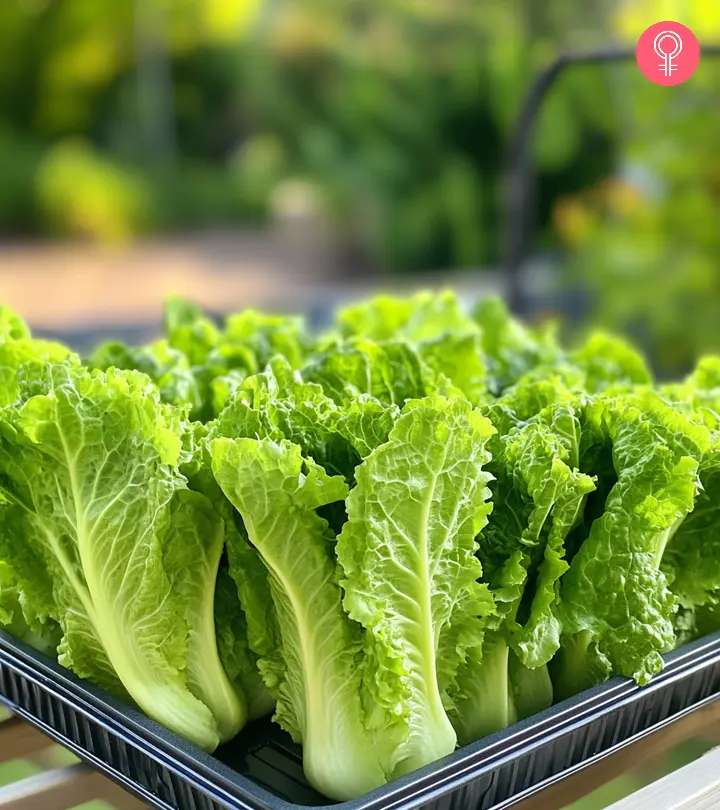
Image: Midjourney/ StyleCraze Design Team
Lettuce (Lactuva sativa) is an annual plant first cultivated by Egyptians. It has been used in Unani for centuries for treating many ailments. This low-carb, green leafy vegetable is an excellent source of essential nutrients and antioxidants. It is often used in salads, sandwiches, soups, and wraps. So, is lettuce good for you?
One of the most important lettuce nutrition facts is that it is a rich source of vitamins K and A and possesses numerous impressive health benefits. Lettuce may help in controlling inflammation, reducing body weight, promoting brain health, and reducing the risk of cardiovascular diseases. But there is more to lettuce that one must know. In this article, we discuss the potential health benefits, nutritional profile, types, and side effects of lettuce. Read on for more information
 Know Your Ingredient: Lettuce
Know Your Ingredient: LettuceWhat Is It?
It is a leafy green vegetable commonly used in salads and sandwiches and is rich in several vitamins and minerals.
What Are Its Benefits?
It is low in calories and high in antioxidants and dietary fiber, which can aid in digestion, protect against free radical damage, and promote bowel regularity.
Who Can Use It?
It can be consumed by most people as a part of a healthy diet. Individuals with kidney disease or hypothyroidism should limit their intake of lettuce due to its high potassium content.
How Often?
It is generally safe to consume lettuce on a daily basis as a part of a balanced diet.
Caution
It is important to wash it thoroughly before consumption to remove any potential contaminants. Avoid if you are allergic to ragweed or related plants.
In This Article
What Is Lettuce?
Many people are confused about which category lettuce falls under. Is lettuce a vegetable? Let’s find out.
Lettuce is an annual plant belonging to the daisy family. It is most often grown as a leafy vegetable. It is easily cultivated, and it requires low temperatures to keep from flowering.
Though lettuce may be mistaken for cabbage, these vegetables are different in terms of water content. Cabbage has less water than lettuce. Besides, there are more health benefits of cabbages as they are packed with more vitamins and minerals.
In the following section, we look at the history of the leafy veggie.
What Is The History Of Lettuce?
Lettuce was originally cultivated in ancient Egypt for the extraction of oil from its seeds. There is evidence of the plant appearing as early as 2680 BC.
The plant also appears in various medieval writings from 1098 to 1179 and is specifically mentioned as a medicinal herb. Lettuce traveled from Europe to the Americas with Christopher Columbus in the late 15th century. Books published in the mid 18th and early 19th centuries spoke of the various kinds of lettuce found today.
 Fun Fact
Fun FactLettuce is known for the many benefits it offers. In the following section, we look at the health benefits of lettuce.
What Are The Benefits Of Lettuce?
Lettuce is particularly rich in antioxidants like vitamin C and other nutrients like vitamins A and K and potassium.
This leafy green veggie helps fight inflammation and other related diseases like diabetes and cancer. The benefits only get better if you use the Romaine variety of lettuce, as not all lettuce is created equal. Also, the darker the lettuce, the more nutrient-dense it is.
1. May Fight Inflammation
Certain proteins in lettuce (or Romaine lettuce), like lipoxygenase, help control inflammation. This has been proven in one Iranian study. According to the study, lettuce has been used in folk medicine to relieve inflammation and osteodynia (pain in the bones) (1).
The vitamins A, E, and K in lettuce may help lower inflammation (2). You can usually include two cups of raw leafy greens in your diet on a regular basis. Other vitamin K-rich veggies include kale, broccoli, spinach, and cabbage. The darker the lettuce, the more antioxidants it has and the better it can fight inflammation.
Lettuce is also known as a pain-safe food. It may never contribute to arthritis or related painful conditions. However, more research is needed in this regard.
Fathimath Nisha, a blogger, shares the benefits of adding romaine lettuce to their diet, especially for her sensitive teeth. She mentions that romaine lettuce is considered the most nutritious lettuce variety. She writes, “If you have sensitive teeth, eating one head of romaine lettuce per day can be extremely beneficial (i).”
2. May Aid Weight Loss
One major reason lettuce can be an ideal weight loss food is its calories. One serving of lettuce contains just 5 calories (3). Moreover, lettuce helps bridge the micronutrient gap that is otherwise hard to achieve on a low-calorie diet.
Lettuce is also low in energy density. This is especially true with Romaine lettuce, which is 95% water and offers 1 gram of fiber per cup. Fiber keeps you full and discourages binging. Darker varieties like Romaine lettuce have a higher nutrient content.
Lettuce is also extremely low in fat. Adding one large leaf of Romaine lettuce to your lunch could be a good idea. However, there is no direct research stating that lettuce may help with weight loss.
3. May Promote Brain Health
Extreme cases of brain harm can lead to the death of neuronal cells, leading to severe brain diseases like Alzheimer’s. The lettuce extracts, as per numerous studies, had controlled this neuronal cell death due to its role in GSD or glucose/serum deprivation (4).
Lettuce is also rich in dietary nitrate. This compound is converted to nitric oxide in the body, which is a cellular signaling molecule that promotes endothelial function. The reduction of endothelial function contributes to cognitive decline and other neurological disorders related to aging (5). The intake of lettuce can slow this down.
4. May Boost Heart Health
Romaine lettuce is a good source of folate, which is a B vitamin that converts homocysteine into methioninei An essential amino acid found in dairy products, fish, and meat. It helps with the synthesis of proteins in the body. . Unconverted homocysteine can damage the blood vessels and lead to the accumulation of plaque, thereby damaging the heart (6).
Lettuce is also a rich source of vitamin C, which reduces arterial stiffness and helps in the treatment of cardiovascular disease (7). It may strengthen arteries and even prevent heart attacks. Including two servings of romaine lettuce in your diet daily can keep your heart healthy.
Lettuce also contains potassium that lowers blood pressure and prevents heart disease. Lettuce consumption can also increase HDL (the good cholesterol) and reduce the levels of LDL (8).
Lettuce intake is also associated with improved cholesterol metabolism, as per another study. It also increases the antioxidant status in the body. Regular consumption of lettuce can protect one from cardiovascular disease.
According to a Danish Diet, Cancer, and Health Study conducted on 57,053 people, there were 2,307 cases of cardiovascular disease reported during the average follow-up period of 16 years. The average intake of vegetable nitrate in those with cardiovascular disease was recorded at 107 mg/day. Men and women with the highest intake of vegetable nitrate (>200 mg/day) had a 17% lower risk of cardiovascular disease than those who had the lowest intake. The risk of cardiovascular disease was lower for those who had the highest intake of green vegetables, especially lettuce, which contributed to a 41% of total vegetable nitrate intake.
5. May Help Fight Cancer
Lettuce consumption has been linked to a lowered risk of stomach cancer, especially in parts of Japan where the vegetable is taken regularly (9).
Lettuce is a non-starchy vegetable. One report by the World Cancer Research Fund suggests that non-starchy veggies can protect against several types of cancers, including those of the mouth, throat, esophagus, and stomach (10). Another study was conducted in Japan on smokers with lung cancer. The findings revealed that intake of lettuce could have protective effects (11).
6. May Cut Diabetes Risk
, Registered Dietitian, says, “Lettuce is low in carbohydrates, meaning, it won’t raise blood sugar levels, and high in essential nutrients, such as vitamins A and C, making it a great choice for someone who has diabetes.”
Studies have shown that greens, especially those like lettuce, may reduce the risk of type 2 diabetes. This can be attributed to the low glycemic index (the effect of a particular food on your blood sugar levels) of lettuce.
Also, one cup of lettuce contains just about 5 calories and 2 grams of carbs (3). This fact also makes it a healthy addition to a diabetes-friendly diet. Romaine lettuce is preferable to any other variety as it contains essential micronutrients.
Lettuce also contains lactucaxanthin, an anti-diabetic carotenoid that lowers blood glucose levels and can be a potential treatment for diabetes (12).
7. May Promote Vision Health
Lettuce contains zeaxanthin, an antioxidant that boosts vision health. It is found to prevent age-related macular degeneration (13). Dark greens like lettuce contain both lutein and zeaxanthin. These help promote vision health (14).
Romaine lettuce is also a good replacement for spinach (another veggie good for the eyes). Several other studies have shown the importance of lutein and zeaxanthin in boosting eye health and preventing cataracts and other eye diseases (15).
8. May Promote Digestive Health
The fiber in lettuce promotes digestion and wards off other digestive ailments like constipation and bloating. It also may relieve stomach pain. However, direct research is limited. Lettuce is known to help the stomach process different types of food. It also may help treat other issues like indigestion (16).
9. May Help Treat Insomnia

Lactucarium, a substance in lettuce, sedates the nervous system and promotes sleep (17). You can add lettuce to your late night salad in case you have difficulty falling asleep at night. Lettuce also contains another substance called lactucin, which induces sleep and relaxation. This veggie was used even in medieval times to relieve insomnia (17).
 Trivia
Trivia10. May Enhance Bone Health
Vitamins K, A, and C are important in collagen production (the first step in bone formation). Lettuce is rich in all three of them (3). Vitamin K helps build cartilage and the connective tissues. Vitamin A helps in the development of new bone cells, the deficiency of which can lead to osteoporosisi A bone disease that develops due to low mineral bone density and mass in the body. It can result in frequent fractures and back pain. and an increased risk of fractures (18). Vitamin C fights bone depletion, which is one of the factors of aging.
Insufficient vitamin K can lead to osteopenia (reduced bone mass) and increased fracture risk. Supplementation of this vitamin reduces bone turnover and enhances bone strength (19).
11. May Boost Immunity
Though there isn’t a lot of research in this aspect, the presence of vitamins A and C in lettuce may make it a good option for boosting immunity.
12. May Be Good For Pregnancy

Lettuce contains folate. This nutrient can reduce the risk of birth defects (20). Lettuce is also rich in vitamin K. Deficiency of vitamin K during pregnancy can cause vitamin K deficiency bleeding. Although vitamin K shots are preferred to prevent this, taking adequate lettuce (and other vitamin K rich foods) may also help (21). The fiber in lettuce may also prevent constipation, which is one issue pregnant women usually face. A cup of romaine lettuce contains about 64 micrograms of folate (3).
13. May Improve Muscle Strength And Metabolism
The potassium in lettuce may enhance muscle strength. However, there is no research to support this. Lettuce contains nitrates that are known to promote exercise capacity (22). These may help in muscle strength and metabolism, although more research is warranted.
14. May Improve Skin And Hair Health
The vitamin A in lettuce may promote skin cell turnover. The vitamin C it contains may protect the skin from UV radiation. It also delays the signs of aging (23). The fiber in lettuce may detox your system and promote skin health.
Washing your face with lettuce extract or juice in the morning may improve your skin health. Anecdotal evidence suggests that the vitamin K in lettuce may promote hair strength as well. Washing your hair with lettuce juice may help.
15. May Fight Anemia
Lettuce contains modest amounts of folate. Folate deficiency may also lead to some forms of anemia (24). Folate also helps fight megaloblastic anemia, which is another type of anemia where the blood cells are very large and underdeveloped (25). Romaine lettuce can also aid the treatment of vitamin B12 deficiency anemia (26).
16. May Keep You Hydrated
Lettuce is 95% water (3). Eating the vegetable can keep you hydrated may help maintain your hydration levels.
17. May Help Reduce Acid Reflux
Lettuce is a mild vegetable with a high water content and low calories (27). It does not produce a lot of gas when digested and reduces the feeling of bloating (28). Lettuce is generally recommended to those with acid reflux as it is low in FODMAPs and helps manage symptoms of irritable bowel syndrome (IBS) (29).
18. May Help Manage Uric Acid Levels
Lettuce contains low levels of uric acid with only 13 mg per 100 grams (30). This makes it beneficial for individuals with gout, a disorder with painful joints caused by the accumulation of uric acid. You may replace cruciferous vegetables such as broccoli with lettuce for uric acid reduction. However, consult your doctor first to exactly how much lettuce to add to your diet.
These are the benefits of lettuce. While some of them are yet to be proven by the medical community, you can still include it in your diet. In the following section, we have discussed the nutritional profile of lettuce.
What Is The Nutritional Profile Of Lettuce?
| Cholesterol 0 mg | 0% |
| Total fat 0.2 g | 0% |
| Saturated fat 0 g | 0% |
| Polyunsaturated fat 0.1 g | |
| Monounsaturated fat 0 g | |
| Amount Per 1 leaf inner (5 g) | |
| Calories 15 | |
| Sodium 28 mg | 1% |
| Potassium 194 mg | 5% |
| Total Carbohydrate 2.9 g | 0% |
| Dietary fiber 1.3 g | 5% |
| Sugar 0.8 g | |
| Protein 1.4 g | 2% |
| Vitamin A | 148% | Vitamin C | 15% |
| Calcium | 3% | Iron | 4% |
| Vitamin B-6 | 5% | Vitamin B-12 | 0% |
| Magnesium | 3% |
One cup of lettuce (36 grams) contains just 5 calories and 10 grams of sodium. It doesn’t contain cholesterol or any kind of fat. Other important nutrients include:
5 grams of fiber (2% of the daily value)
- 5 micrograms of vitamin K (78% of the daily value)
- 2665 IU of vitamin A (53% of the daily value)
- 5 milligrams of vitamin C (11% of the daily value)
- 7 micrograms of folate (3% of the daily value)
- 3 milligrams of iron (2% of the daily value)
- 1 milligram of manganese (5% of the daily value)
*values sourced from USDA, Lettuce, cos or romaine, raw
The vitamin A in lettuce is in the form of provitamin A carotenoid, which the body converts into retinol to offer the benefits.
What Are The Different Types Of Lettuce?
- Butterhead, which has loose leaves and a buttery texture. This variety is widely cultivated in Europe
- Celtuce, also called the Chinese variety. It possesses strong-flavored leaves that are long and tapering.
- Crisphead, which forms tight and dense heads and resembles a cabbage. This is also called the iceberg lettuce, given its high water content. Another form of crisphead is butter lettuce or butterhead, which resembles a cabbage. Boston lettuce is another form of butter lettuce.
- Looseleaf, which has flavorful leaves that are tender and delicate. A couple of variants include the green oak leaf and the red oak leaf.
- Romaine lettuce, which has a long head of sturdy leaves. This is the most nutritious and the most popular type of lettuce used in the USA. Romaine lettuce is also called cos.
- Summer crisp, which forms moderately dense heads that have a crunchy texture. This is an intermediate between the crisphead and looseleaf type.
- Lamb lettuce, which has long spoon-shaped dark leaves and a tangy flavor.
According to a survey conducted on 3736 UK-based participants, romaine lettuce has a rank of 34 among the most commonly consumed vegetables. It is liked by 60% of the people and is 65% more popular among women than men. Further, the popularity of the vegetable among baby boomers, Gen X, and millennials is 61%, 64%, and 46%, respectively.
As we saw, romaine has the highest nutritional value. Iceberg is said to have the lowest. These two types of lettuce are quite common. In the following section, we will look at the differences between the two.
Romaine Lettuce Vs. Iceberg Lettuce
One difference between the two is their appearance. But the most significant differences arise from the nutritional standpoint. Let’s look at them in detail.
- Vitamin K
Most forms of lettuce contain vitamin K. But romaine lettuce contains 48 micrograms of vitamin K (and it is much darker), while the iceberg variant contains just about 17 micrograms.
- Vitamin A
One cup of romaine lettuce contains over 10 times the vitamin A available in its iceberg cousin. The former contains over 4,094 IU of the nutrient, while the latter just has 361 IU of it.
- Other Nutrients
Romaine lettuce contains slightly higher amounts of fiber and protein as well.
- Water Content
Iceberg lettuce has 2 ounces of water per serving, while the romaine variety has 1.5 ounces.
You saw the varieties. But what if you want to buy any? And what about the storage?
How Do We Select And Store Lettuce
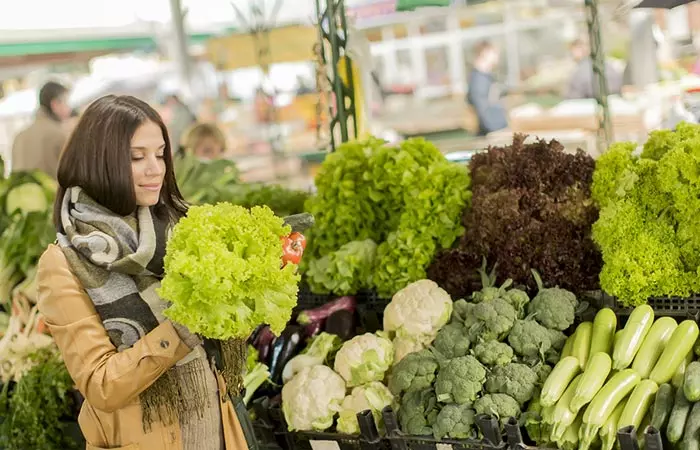
Selection
Proper selection plays a vital role in ensuring that you are buying fresh vegetables.
- Always prefer whole heads of lettuce over loose lettuce leaves as they are fresher and more nutritious.
- Ensure that the leaves are crisp, tender, and brightly colored. Lettuce can be best enjoyed if it is fresh and crisp.
- Dark green veggies are great sources of vitamin C, folate, beta-carotene, iron, calcium, iron, and dietary fiber.
- Try to look for dark-colored leaves.
- Lettuce is delicious as long as it is fresh.
- While shopping for lettuce, you should avoid bunches that are limp, wilting, brownish or have rust, spots or holes on them. You might find romaine lettuce that is slightly brownish along the edges of the outer leaves. This does not matter as long as the rest of the head is fresh and green.
- You can buy your lettuce from your nearest farmer’s market or supermarket store.
Storage
Lettuce is a delicate vegetable, and proper storage is crucial for maintaining its freshness. Storing lettuce is quite an uphill task as its leaves are prone to bruising if roughly handled. Moreover, greens do not last long. Hence, you should give up the idea of stocking lettuce for future use.
Kaylee Seekon, Registered Dietitian, says, “Lettuce does need to be refrigerated. One tip is to store your lettuce/ spinach with a paper towel. The paper towel will absorb moisture and help make the spinach last longer.”
- Iceberg and romaine lettuce can be stored for up to 10 days and red and green leaf lettuces for about 4 days.
- The best way to store lettuce is to keep it unwashed in an airtight container or plastic bag and store it in the crisper section of the refrigerator.
- Ensure you keep the lettuce away from fruits that produce ethylene gas; these include apples, bananas, or pears. They can accelerate the deterioration of lettuce by increasing brown spots on the leaves and causing spoilage.
- Bunches of lettuce should be checked for insects, and the leaves having roots should be placed in a glass of water with a bag over the leaves. This must be stored in the refrigerator.
- The most difficult part about storing lettuce is maintaining the moisture level. Too much moisture suffocates the lettuce leaves due to condensation, causing it to spoil faster. More moisture also results in more production of ethylene gas, which speeds up the decay and spoilage. Some moisture, though, is necessary to ensure that the leaves stay crisp and do not dry out. Lettuce should be kept moist by wrapping it in a slightly damp paper towel or zip top bag. This enables it to absorb excess water without dehydrating the leaves. The crisper section of the refrigerator is the best spot for storing lettuce due to controlled and consistent humidity.
In the following section, we will look at the other ways of using lettuce.
Any Tips On Usage?
The dark, richly colored varieties of lettuce are the richest in nutritional value, indicated by the presence of vitamin A and other antioxidants, such as carotenoids and lutein. You can use lettuce in the following ways.
Eating
Lettuce is mostly eaten raw, so before serving, remove any brown, slimy, wilted or decayed leaves. The leaves should be washed thoroughly and dried to remove any dirt or insects. Lettuce is most commonly used in salads by regular eaters. Given below are certain tips for preparing lettuce before serving it in the form of salad:
- Wash the leaves in cold water. Avoid washing them in running water as it might damage them. Pat the leaves gently to dry them.
- Place the bunch on the chopping board and pound the core hard. This will loosen the leaves and make them easier to remove.
- Holding the core firmly in one hand and the lettuce in another, twist the core to separate the leaves from it.
- Place the leaves in a salad spinner to dry. Tear them instead of cutting with a knife so that they do not get bruised.
- Any dressing to the salad should be added just before serving it so that the leaves remain crisp.
- Ensure you add a fat medium to lettuce, like a dressing of olive oil. This fat liberates the fat-soluble nutrients to be used by the body.
Cooking
Apart from being added to salads, lettuce can also be cooked and made into dishes that can serve as a delightful treat. Being crisp, mild, soft, and buttery, lettuce can suit all tastes and form a part of many dishes, making them more interesting.
- This wonderful vegetable can be braised, steamed, sautéed, and grilled to create something that is pleasing to the taste buds besides being nutritious. Try adding some extra virgin olive oil to halved radicchio or romaine lettuce and grill until they are softened and browned.
- Lettuce can be easily used along with other vegetables in burgers, sandwiches, and wraps.
- You can try using an entire head of lettuce in a smoothie. It is advisable to add the fruits and blend them first and then add lettuce leaves to the smoothie. You can make a smoothie using fruits like bananas, strawberries, or mangoes in combination with an entire head of romaine lettuce.
Let us take a look at some delicious recipes using lettuce.
Any Popular Recipes Using Lettuce?
1. Green Raspberry Smoothie
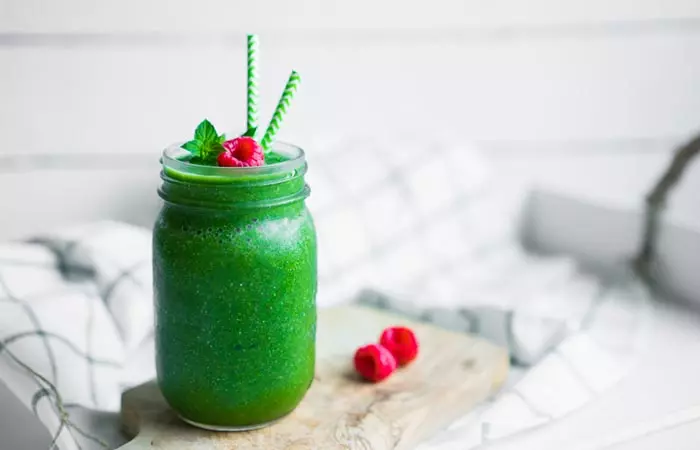
What You Need
- 1 cup of lettuce leaves
- ½ cup each of frozen raspberries and blueberries
- 1 ripe banana
- ½ cup of milk
- 2 tablespoons of oats
- 1 tablespoon of sugar
Directions
- Combine all ingredients in a blender. Add a cup of ice and blend until the mixture is smooth.
- Serve immediately.
2. Lettuce Caesar Salad

What You Need
- 1 head of romaine lettuce, torn into bite-size pieces
- 6 cloves of peeled garlic
- ¾ cup of mayonnaise
- 5 minced anchovy fillets
- 6 tablespoons of grated Parmesan cheese
- 1 teaspoon of Worcestershire sauce
- 1 teaspoon of Dijon mustard
- 1 tablespoon of lemon juice
- ¼ cup of olive oil
- 4 cups of old-day bread
- Ground black pepper and salt, to taste
Directions
- Mince three cloves of garlic. Combine them in a bowl with mayonnaise, anchovies, two tablespoons of Parmesan cheese, Worcestershire sauce, mustard, and lemon juice.
- Season with salt and black pepper to taste. Refrigerate until ready to use.
- In a large skillet, heat oil over medium heat. Mince the remaining three cloves of garlic and add to the hot oil. Cook and stir until they turn brown, and then remove the garlic from the pan. Add the bread cubes to the hot oil. Cook until they are lightly browned on both sides. Remove the bread cubes and season with salt and pepper.
- Place the lettuce in a large bowl. Toss the remaining Parmesan cheese and seasoned bread cubes with the dressing.
You can also use these ingredients to make lettuce wraps, which will make for a healthy evening snack.
Here are some interesting facts about lettuce.
Any Interesting Facts About Lettuce?
- Lettuce is one vegetable that is pretty much immune to any kind of preservation.
- Iceberg lettuce takes about 85 days from sowing to maturity.
- Lettuce is the second most popular fresh vegetable in the United States, only behind potatoes.
- Thomas Jefferson had 19 varieties of lettuce growing in his garden in Monticello.
- China is the world’s largest producer of lettuce.
Lettuce is healthy. But excess intake could cause issues. In the upcoming section, we discuss the potential side effects of lettuce.
What Are The Side Effects Of Eating Lettuce?
- Excess Vitamin K
According to Kaylee Seekon, Registered Dietitian, “Lettuce contains vitamin K, which plays a role in blood clotting. One thing to note is those who are taking blood thinners, such as Warfarin/ Coumadin, need to be careful about the amount of vitamin K they are consuming.”
Excess of vitamin K can cause problems in people on blood-thinning medications like warfarin. Excess of lettuce may decrease the effectiveness of warfarin (31). Hence, if you are on blood-thinning medication, talk to your doctor before consuming lettuce.
- Issues During Pregnancy And Breastfeeding
Lettuce is safe in normal amounts. But there is no information on what would happen if taken in excess. Hence, avoid excess intake.
- Issues With Prostate And Vision (Wild Lettuce)
Wild lettuce is another variety of lettuce, but it is very less commonly consumed. It must not be taken during pregnancy and breastfeeding (it can lead to complications; more research is warranted). It also can lead to an enlarged prostate and narrow-angle glaucomai An eye disease that damages the optic nerve of the eye and can lead to blindness. It is caused by pressure building up inside the eyes. . Hence, avoid consuming it. More research is needed in this aspect, however.
Infographic: Top 7 Reasons To Have Lettuce
You can count on lettuce to keep you healthy and trim if you’re trying to lose weight. It’s low on calories and high on nutrition that will make you sated and happy. While we have discussed the many benefits it offers for your body, here’s a quick roundup of some of its best ones.
Check out the infographic below to learn more about the health benefits of lettuce that makes it a must-have in your pantry. Illustration: StyleCraze Design Team
The health benefits of lettuce are numerous. It is rich in antioxidants and many beneficial nutrients. If included regularly in the diet, it combats inflammation and promotes brain, heart, vision, digestive, bone, skin, and hair health. It also aids in weight loss, reduces cancer risk, manages insomnia, and is beneficial during pregnancy. However, excess intake may trigger drug interactions with blood-thinning medications and cause complications during pregnancy and breastfeeding. However, if you don’t have any of the aforementioned complications, you can include lettuce in your diet in moderation. Try any of the mouth-watering recipes to include lettuce in your diet.
Frequently Asked Questions
Which is healthier – spinach or lettuce?
Juliana Tamayo, a registered dietitian, says, “While both lettuce and spinach are healthy leafy greens, spinach is often considered a superior choice. Spinach is high in magnesium, potassium, vitamin K, iron, phosphorus, zinc, and copper. It is also a good source of fiber. Lettuce is a source of these same micronutrients, but not the highest one.”
What is Devil’s lettuce?
Weed and marijuana are also called Devil’s lettuce in some places.
What is rocket lettuce?
It is a leafy green and edible plant that is also called arugula. The common Arugula benefits include improving eye health, maintaining blood sugar levels, and enhancing nerve function.
Is lettuce good for belly fat?
Anecdotal evidence suggests that leafy green vegetables like lettuce may help burn belly fat. However, limited data is available in this regard.
Is lettuce healthier than tomatoes?
Lettuce and tomatoes share a few common nutrients. But tomatoes contain lycopene (a cancer-fighting compound), which is absent in lettuce.
Is lettuce anti-inflammatory?
Yes. Lettuce exhibits anti-inflammatory properties (1).
Is lettuce good for anxiety?
Yes. Lettuce has anxiolytic properties, which can help reduce anxiety symptoms (32).
Can cycling increase height?
No. There is no scientific evidence suggesting that cycling can increase height.
Key Takeaways
- Lettuce is a leafy green veggie of impressive nutritional value, with minerals like iron and potassium and vitamins A, K, C, and B complex.
- There are various kinds of lettuce like butterhead, celtuce, crisphead, looseleaf, romaine lettuce, summer crisp, and lamb lettuce.
- It hydrates the skin and may also lessen the appearance of dark circles and puffiness.
- Its numerous health benefits include a healthy digestive system, lower blood pressure, and optimal weight management.
- People taking blood thinners, such as Warfarin/Coumadin should avoid eating lettuce or consult a doctor before doing so.
Illustration: Scientifically Proven Health Benefits Of Lettuce
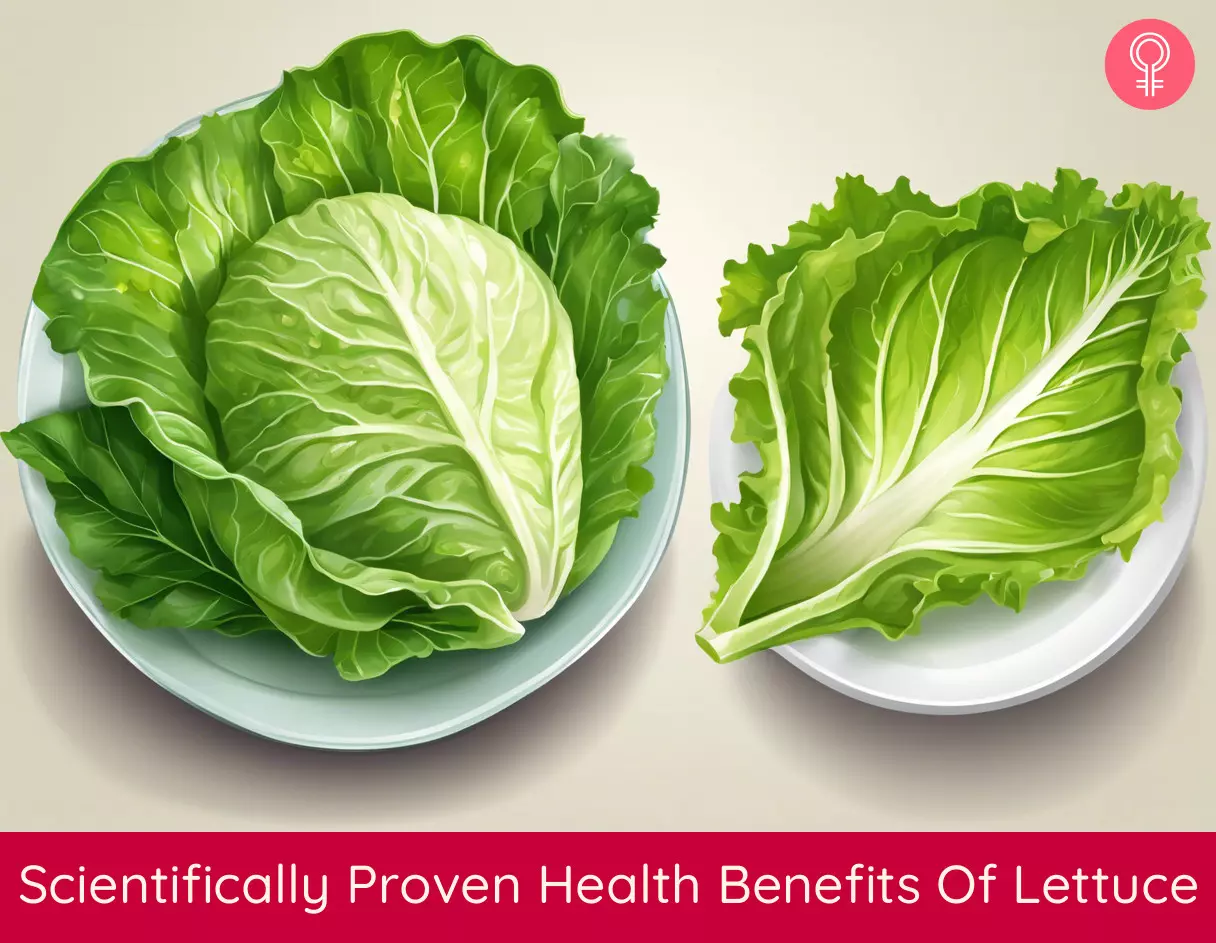
Image: Stable Diffusion/StyleCraze Design Team
Learn about lettuce nutrition facts and health benefits in this informative video! And discover how lettuce can help you stay healthy and fit. Go, check it out!
Personal Experience: Source
StyleCraze's articles are interwoven with authentic personal narratives that provide depth and resonance to our content. Below are the sources of the personal accounts referenced in this article.
i. Romaine lettuce for sensitive teeth,https://fathimathnisha.wordpress.com/2010/10/18/romaine-lettuce-for-sensitive-teeth/
References
Articles on StyleCraze are backed by verified information from peer-reviewed and academic research papers, reputed organizations, research institutions, and medical associations to ensure accuracy and relevance. Read our editorial policy to learn more.
- Sayyah, Mohammad, Naghmeh Hadidi, and Mohammad Kamalinejad. “Analgesic and anti-inflammatory activity of Lactuca sativa seed extract in rats.” Journal of Ethnopharmacology92.2-3 (2004): 325-329.
https://pubmed.ncbi.nlm.nih.gov/15138019/ - Ismail, Hammad, and Bushra Mirza. “Evaluation of analgesic, anti-inflammatory, anti-depressant and anti-coagulant properties of Lactuca sativa (CV. Grand Rapids) plant tissues and cell suspension in rats.” BMC complementary and alternative medicine15.1 (2015): 199.
https://www.ncbi.nlm.nih.gov/pmc/articles/PMC4482268/ - “FoodData Central Search Results.” FoodData Central.
https://fdc.nal.usda.gov/fdc-app.html#/food-details/169247/nutrients - Ghorbani, Ahmad, Hamid Reza Sadeghnia, and Elham Asadpour. “Mechanism of protective effect of lettuce against glucose/serum deprivation-induced neurotoxicity.” Nutritional neuroscience18.3 (2015): 103-109.
https://pubmed.ncbi.nlm.nih.gov/24621063/ - Jackson, Philippa A., et al. “Promoting brain health through exercise and diet in older adults: a physiological perspective.” The Journal of physiology594.16 (2016): 4485-4498.
https://www.ncbi.nlm.nih.gov/pmc/articles/PMC4983622/ - “Office of Dietary Supplements – Folate.” NIH Office of Dietary Supplements, U.S. Department of Health and Human Services.
https://ods.od.nih.gov/factsheets/Folate-HealthProfessional/ - Wilkinson, I. B., et al. “Oral vitamin C reduces arterial stiffness and platelet aggregation in humans.” Journal of cardiovascular pharmacology34.5 (1999): 690-693.
https://pubmed.ncbi.nlm.nih.gov/10547085/ - Nicolle, Catherine, et al. “Health effect of vegetable-based diet: lettuce consumption improves cholesterol metabolism and antioxidant status in the rat.” Clinical Nutrition4 (2004): 605-614.
https://pubmed.ncbi.nlm.nih.gov/15297097/ - Haenszel, William, et al. “Stomach cancer in Japan.” Journal of the National Cancer Institute56.2 (1976): 265-274.
https://pubmed.ncbi.nlm.nih.gov/1255759/ - Parkin, D. M., and L. Boyd. “4. Cancers attributable to dietary factors in the UK in 2010.” British journal of cancer105.2 (2011): S19-S23.
https://www.ncbi.nlm.nih.gov/pmc/articles/PMC3252058/ - Gao, Chang‐ming, et al. “Protective effects of raw vegetables and fruit against lung cancer among smokers and ex‐smokers: a case‐control study in the Tokai area of Japan.” Japanese journal of cancer research84.6 (1993): 594-600.
https://pubmed.ncbi.nlm.nih.gov/8340248/ - Gopal, Sowmya Shree, et al. “Lactucaxanthin–a potential anti-diabetic carotenoid from lettuce (Lactuca sativa) inhibits α-amylase and α-glucosidase activity in vitro and in diabetic rats.” Food & function8.3 (2017): 1124-1131.
https://pubmed.ncbi.nlm.nih.gov/28170007/ - Khoo, Hock Eng, et al. “Nutrients for prevention of macular degeneration and eye-related diseases.” Antioxidants8.4 (2019): 85.
https://www.ncbi.nlm.nih.gov/pmc/articles/PMC6523787/ - Abdel-Aal, El-Sayed M., et al. “Dietary sources of lutein and zeaxanthin carotenoids and their role in eye health.” Nutrients5.4 (2013): 1169-1185.
https://www.ncbi.nlm.nih.gov/pmc/articles/PMC3705341/ - Eisenhauer, Bronwyn, et al. “Lutein and zeaxanthin—food sources, bioavailability and dietary variety in age‐related macular degeneration protection.” Nutrients9.2 (2017): 120.
https://www.ncbi.nlm.nih.gov/pmc/articles/PMC5331551/ - Pink, D. A. C., and EAVAN M. KEANE. “Lettuce: Lactuca sativa L.” Genetic improvement of vegetable crops. Pergamon, 1993. 543-571.
https://www.sciencedirect.com/topics/agricultural-and-biological-sciences/lettuce - Kim, Hae Dun, et al. “Sleep-inducing effect of lettuce (Lactuca sativa) varieties on pentobarbital-induced sleep.” Food science and biotechnology26.3 (2017): 807-814.
https://www.ncbi.nlm.nih.gov/pmc/articles/PMC6049580/ - Tanumihardjo, Sherry A. “Vitamin A and bone health: the balancing act.” Journal of Clinical Densitometry16.4 (2013): 414-419.
https://pubmed.ncbi.nlm.nih.gov/24183637/ - Price, Charles T., Joshua R. Langford, and Frank A. Liporace. “Essential nutrients for bone health and a review of their availability in the average North American diet.” The open orthopaedics journal6 (2012): 143.
https://www.ncbi.nlm.nih.gov/pmc/articles/PMC3330619/ - Butterworth, C. E., and Adrianne Bendich. “Folic acid and the prevention of birth defects.” Annual review of nutrition16.1 (1996): 73-97.
https://pubmed.ncbi.nlm.nih.gov/8839920/ - “Office of Dietary Supplements – Vitamin K.” NIH Office of Dietary Supplements, U.S. Department of Health and Human Services.
https://ods.od.nih.gov/factsheets/vitaminK-HealthProfessional/ - Robinson, Sian M., et al. “Does nutrition play a role in the prevention and management of sarcopenia?.” Clinical Nutrition37.4 (2018): 1121-1132.
https://www.ncbi.nlm.nih.gov/pmc/articles/PMC5796643/ - Schagen, Silke K., et al. “Discovering the link between nutrition and skin aging.” Dermato-endocrinology4.3 (2012): 298-307.
https://www.ncbi.nlm.nih.gov/pmc/articles/PMC3583891/ - Khan, Kashif M., and Ishwarlal Jialal. “Folic acid (folate) deficiency.” StatPearls [Internet]. StatPearls Publishing, 2019.
https://www.ncbi.nlm.nih.gov/books/NBK279618/ - Hariz, Anis, and Priyanka T. Bhattacharya. “Megaloblastic Anemia.” StatPearls [Internet]. StatPearls Publishing, 2020.
https://www.ncbi.nlm.nih.gov/books/NBK537254/ - Phytochemicals, nutrition, metabolism, bioavailability, and health benefits in lettuce—a comprehensive review.
https://www.ncbi.nlm.nih.gov/pmc/articles/PMC9219965/ - Abdominal distension after eating lettuce: The role of intestinal gas evaluated in vitro and by abdominal CT imaging.
https://www.ncbi.nlm.nih.gov/pmc/articles/PMC6899808/ - The effect of fermentable, oligosaccharides, disaccharides, monosaccharides, and polyols (fodmap) meals on transient lower esophageal relaxations (tlesr) in gastroesophageal reflux disease (gerd) patients with overlapping irritable bowel syndrome (ibs).
https://www.ncbi.nlm.nih.gov/pmc/articles/PMC9101233/ - Diet in irritable bowel syndrome: What to recommend, not what to forbid to patients!.
https://www.ncbi.nlm.nih.gov/pmc/articles/PMC5467063/ - Uric acid in plants and microorganisms: Biological applications and genetics – A review.
https://www.ncbi.nlm.nih.gov/pmc/articles/PMC5512154/ - Rizzo, Gianluca, et al. “Vitamin B12 among vegetarians: status, assessment and supplementation.” Nutrients8.12 (2016): 767.
https://www.ncbi.nlm.nih.gov/pmc/articles/PMC5188422/ - Lurie, Yael, et al. “Warfarin and vitamin K intake in the era of pharmacogenetics.” British journal of clinical pharmacology70.2 (2010): 164-170..
https://www.ncbi.nlm.nih.gov/pmc/articles/PMC2911546/ - Anxiolytic property of Lactuca sativa, effect on anxiety behaviour induced by novel food and height.
https://pubmed.ncbi.nlm.nih.gov/23768824/
Read full bio of Monica Auslander Moreno
- Juliana Tamayo, MS, RD, LDN, is a registered dietitian with a master's degree in Nutrition, Dietetics, and Sensory Sciences from Kansas State University. She also works as a part-time writer and editor and clinical dietitian and covers all sorts of health and nutrition topics, including chronic illnesses, medicine, cooking, fitness, alternative healing, and more.
 Juliana Tamayo, MS, RD, LDN, is a registered dietitian with a master's degree in Nutrition, Dietetics, and Sensory Sciences from Kansas State University. She also works as a part-time writer and editor and clinical dietitian and covers all sorts of health and nutrition topics, including chronic illnesses, medicine, cooking, fitness, alternative healing, and more.
Juliana Tamayo, MS, RD, LDN, is a registered dietitian with a master's degree in Nutrition, Dietetics, and Sensory Sciences from Kansas State University. She also works as a part-time writer and editor and clinical dietitian and covers all sorts of health and nutrition topics, including chronic illnesses, medicine, cooking, fitness, alternative healing, and more. - Kaylee Seekon, MS, RDN, is a registered dietitian with over 4 years of experience. She is passionate about helping newly diagnosed patients and families understand how to manage their diabetes. She specializes in providing patient-centered nutrition interventions for acute and chronic conditions with counseling skills to facilitate behavioral changes.
 Kaylee Seekon, MS, RDN, is a registered dietitian with over 4 years of experience. She is passionate about helping newly diagnosed patients and families understand how to manage their diabetes. She specializes in providing patient-centered nutrition interventions for acute and chronic conditions with counseling skills to facilitate behavioral changes.
Kaylee Seekon, MS, RDN, is a registered dietitian with over 4 years of experience. She is passionate about helping newly diagnosed patients and families understand how to manage their diabetes. She specializes in providing patient-centered nutrition interventions for acute and chronic conditions with counseling skills to facilitate behavioral changes.
Read full bio of Ravi Teja Tadimalla
Read full bio of Arshiya Syeda
Read full bio of Sindhu Koganti







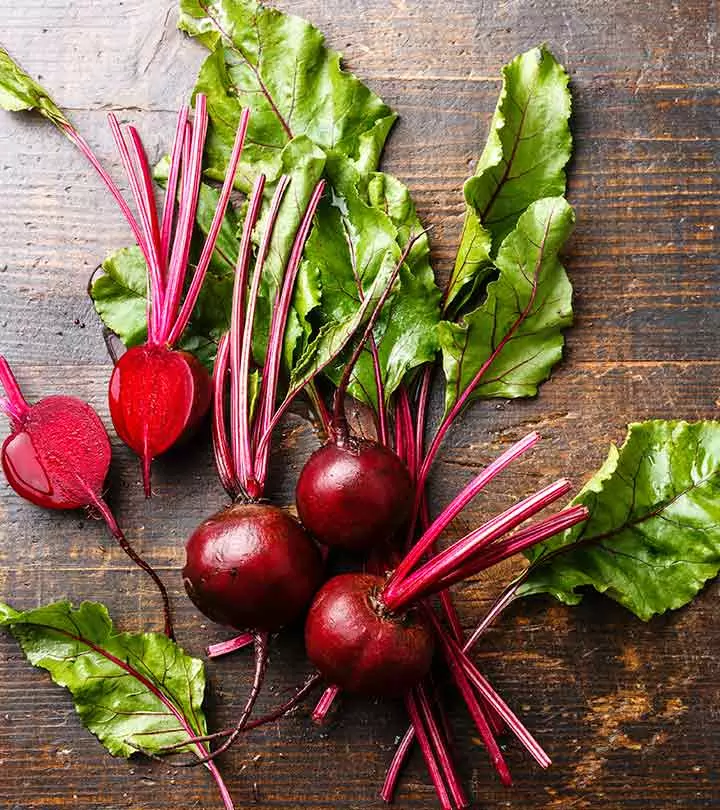


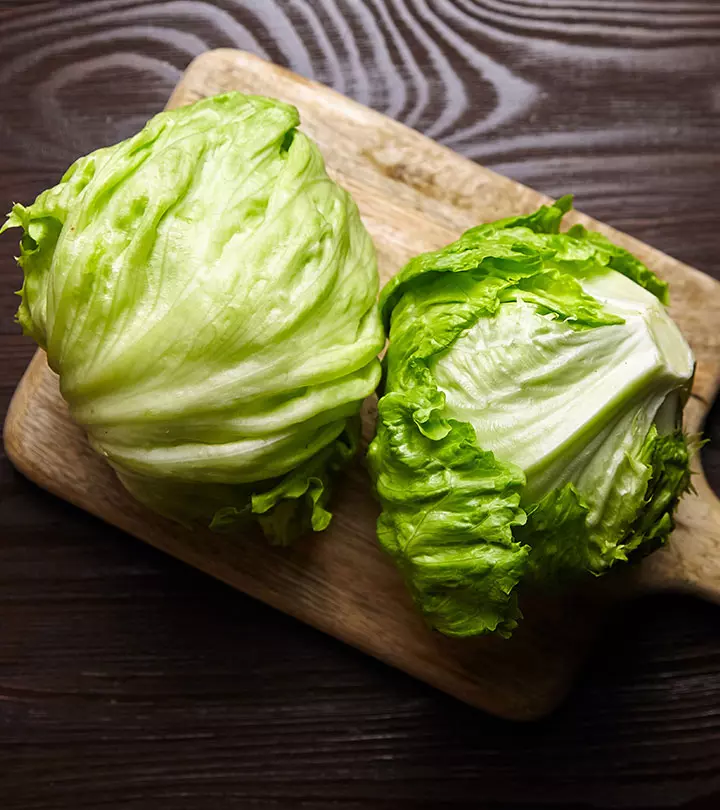
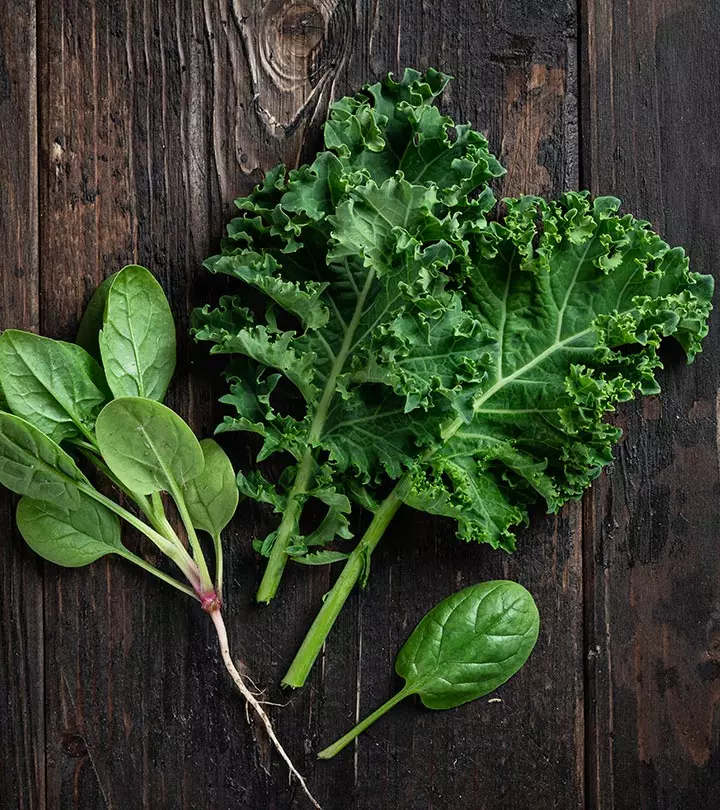
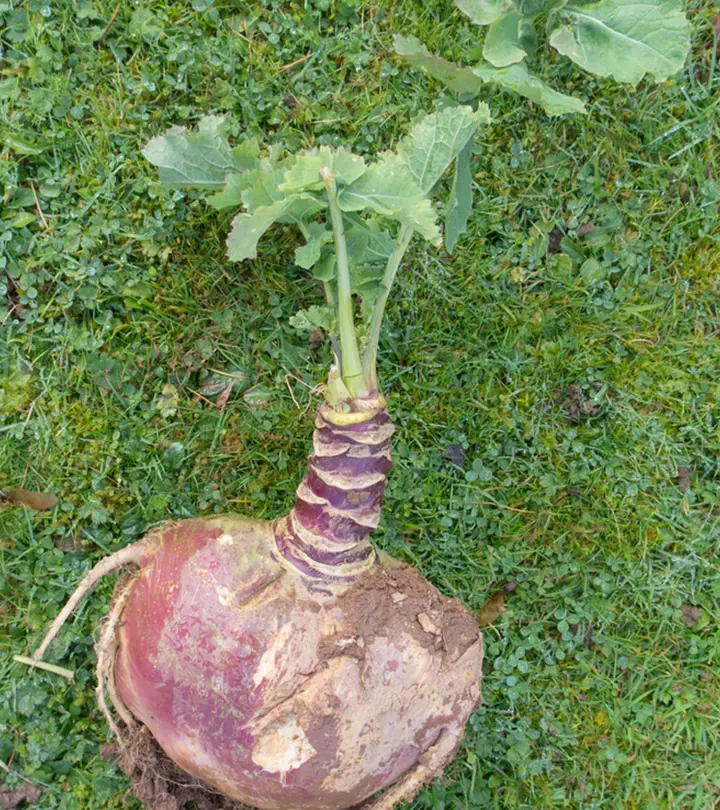
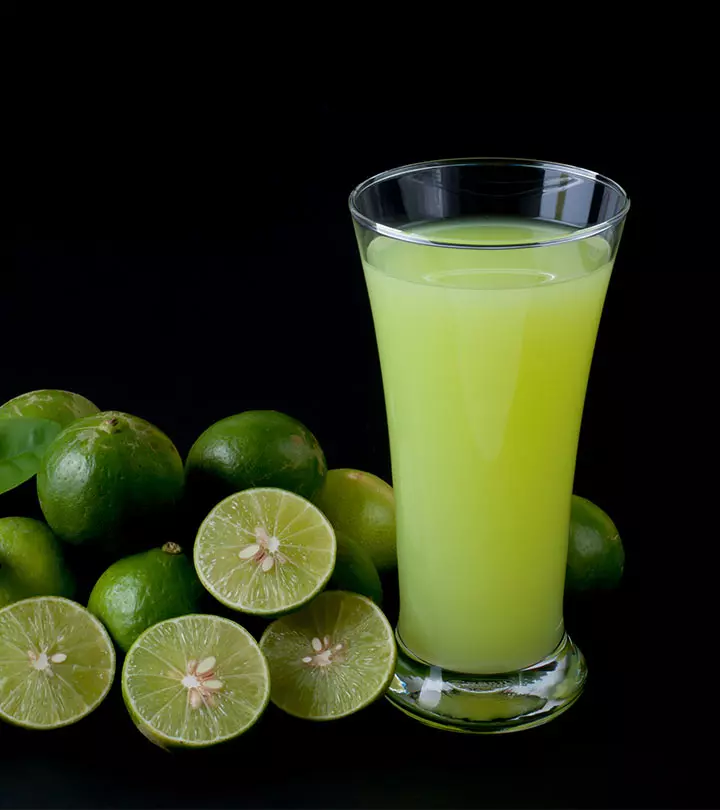
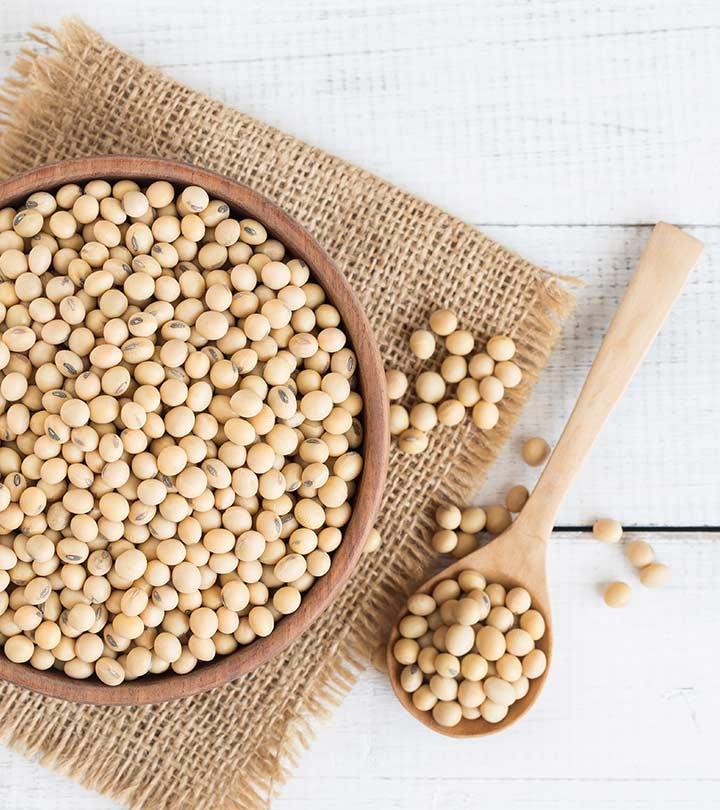
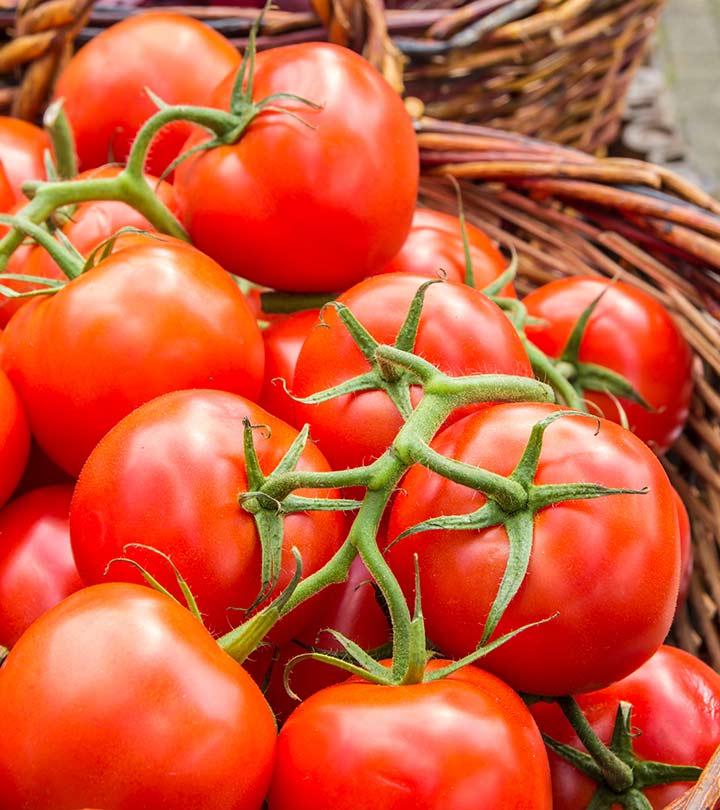





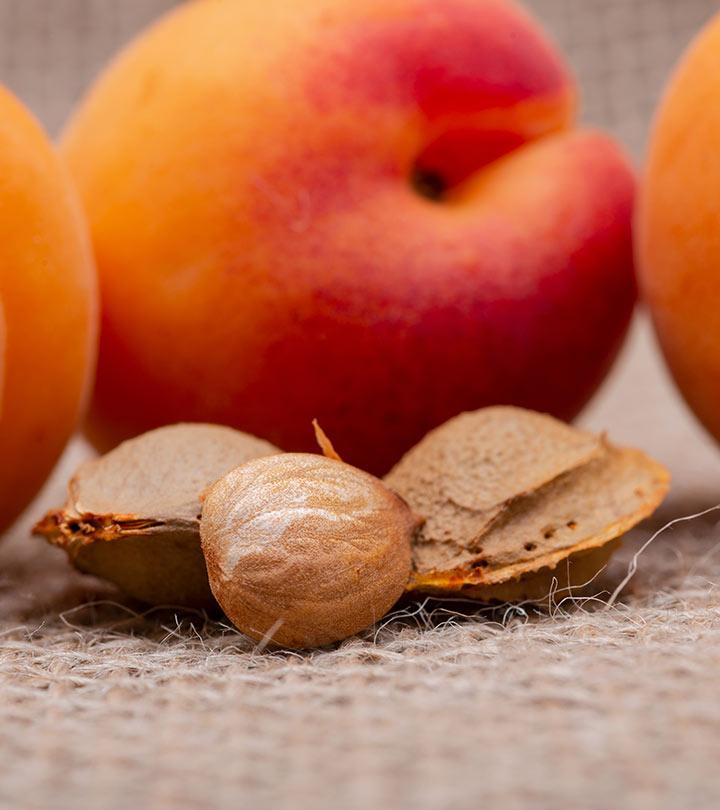
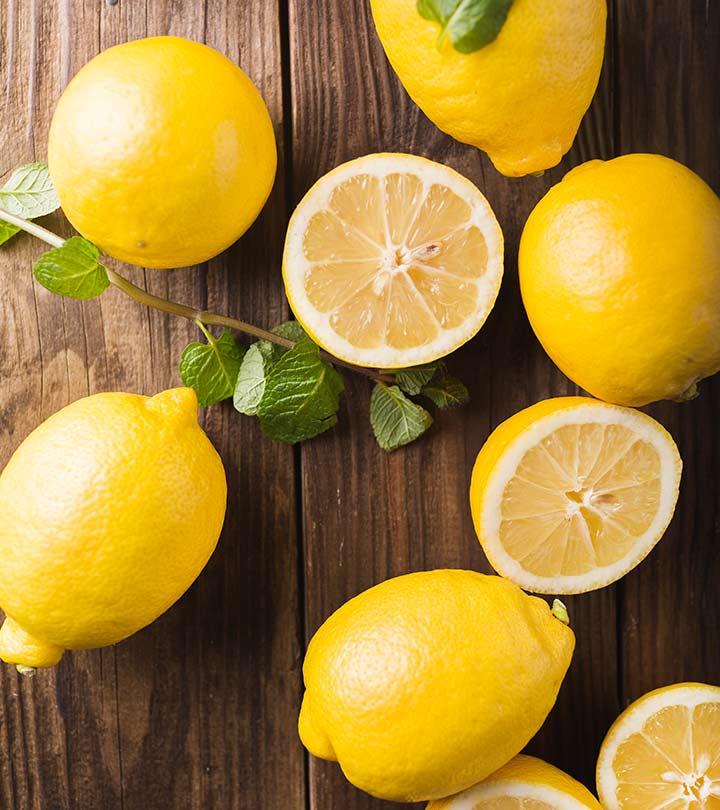
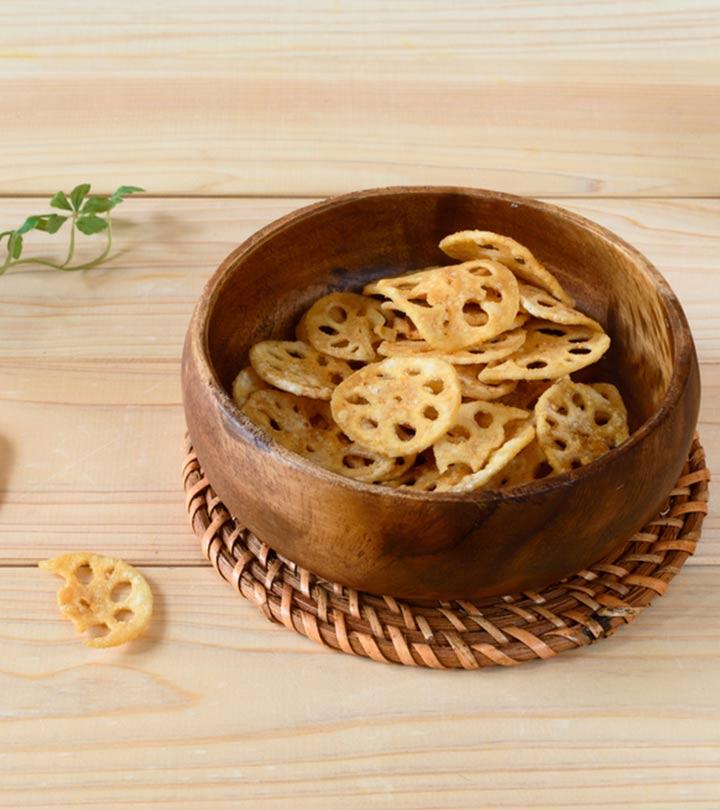
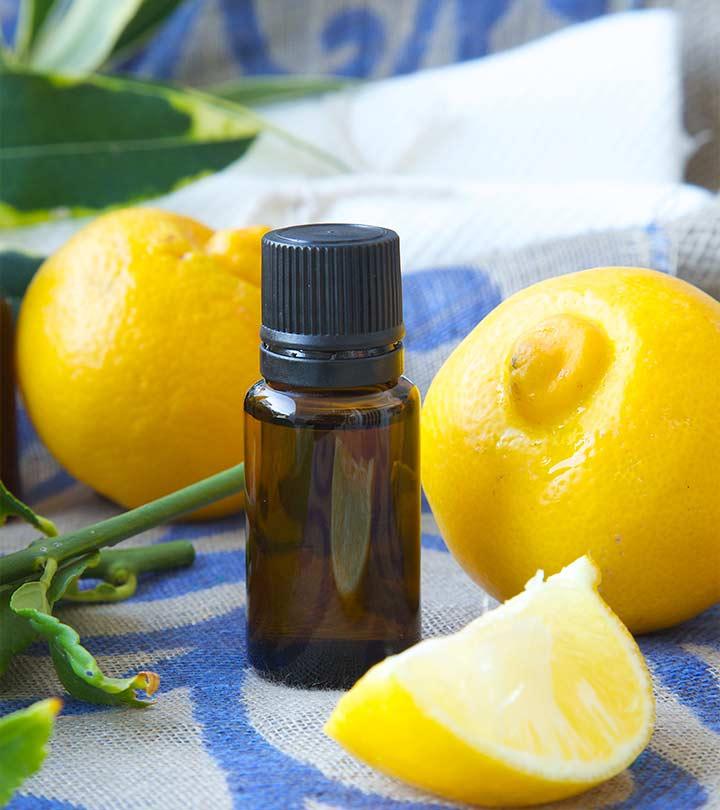

Community Experiences
Join the conversation and become a part of our empowering community! Share your stories, experiences, and insights to connect with other beauty, lifestyle, and health enthusiasts.